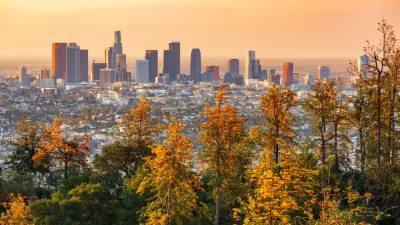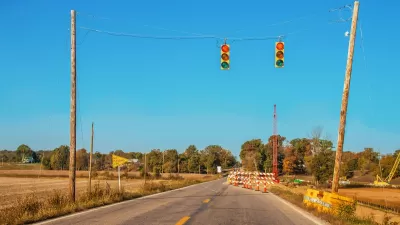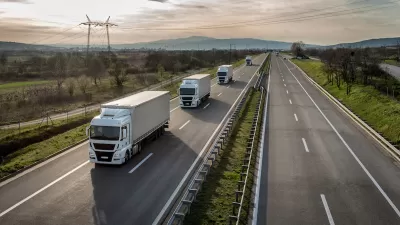Many of the states on the list are red-leaning states that fought against federal environmental reporting regulations.

While average fuel efficiency increased by 30 percent between 2005 and 2022 and per-capita carbon emissions in the United States dropped by 25 percent, fourteen states actually saw increased per-capita carbon emissions in the same time frame.
As Streetsblog USA’s Kea Wilson explains, “According to EPA estimates compiled by Environment America, not only did the transportation emissions rise in the Filthy Fourteen, but emissions were essentially flat in another five states, including Arizona and New Mexico.”
The list includes a group of Republican-leaning states that sued the federal government over a rule that would have required them to report their emissions. “The red state lawsuit aside, though, it's worth noting that blue states like Colorado and Delaware were on the list of states that increased their transport emissions, too. Most states where transportation emissions decreased, meanwhile, still aren't on pace to meet our national goal of slashing 50 to 52 percent of 2005 levels by 2030.”
The report highlights the need for states to reduce transportation emissions rather than focusing on power sector emissions alone. “A recent Union of Concerned Scientists report found, though, that ‘visionary but feasible’ policies that reduce how much Americans need to drive would not only put states' transportation sector goals within reach, but would save U.S. residents a staggering $5.9 trillion in vehicle-related expenses, in addition to trillions in new energy infrastructure communities wouldn't have to build to power all those new EVs.”
FULL STORY: The Emissions Data GOP Pols Don’t Want Americans To See

Study: Maui’s Plan to Convert Vacation Rentals to Long-Term Housing Could Cause Nearly $1 Billion Economic Loss
The plan would reduce visitor accommodation by 25,% resulting in 1,900 jobs lost.

North Texas Transit Leaders Tout Benefits of TOD for Growing Region
At a summit focused on transit-oriented development, policymakers discussed how North Texas’ expanded light rail system can serve as a tool for economic growth.

Using Old Oil and Gas Wells for Green Energy Storage
Penn State researchers have found that repurposing abandoned oil and gas wells for geothermal-assisted compressed-air energy storage can boost efficiency, reduce environmental risks, and support clean energy and job transitions.

Private Donations Propel Early Restoration of Palisades Playground
Los Angeles has secured over $1.3 million in private funding to restore the Pacific Palisades playground months ahead of schedule, creating a modern, accessible space that supports community healing after recent wildfires.

From Blight to Benefit: Early Results From California’s Equitable Cleanup Program
The Equitable Community Revitalization Grant (ECRG) program is reshaping brownfield redevelopment by prioritizing projects in low-income and environmental justice communities, emphasizing equity, transparency, and community benefits.

Planting Relief: Tackling Las Vegas Heat One Tree at a Time
Nevada Plants, a Las Vegas-based nonprofit, is combating the city’s extreme urban heat by giving away trees to residents in underserved neighborhoods, promoting shade, sustainability, and community health.
Urban Design for Planners 1: Software Tools
This six-course series explores essential urban design concepts using open source software and equips planners with the tools they need to participate fully in the urban design process.
Planning for Universal Design
Learn the tools for implementing Universal Design in planning regulations.
Ascent Environmental
Borough of Carlisle
Institute for Housing and Urban Development Studies (IHS)
City of Grandview
Harvard GSD Executive Education
Toledo-Lucas County Plan Commissions
Salt Lake City
NYU Wagner Graduate School of Public Service





























